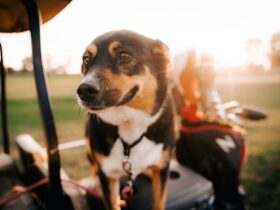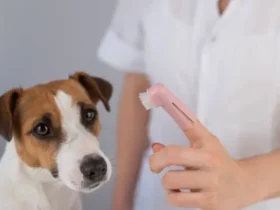My Dog Was Sprayed by a Skunk. Now What?
If your dog has ever been sprayed by a skunk, you know how overpowering and persistent the smell can be. Skunk spray is notorious for its foul odor, and it can linger for days or even weeks if not treated properly. When your dog gets sprayed, knowing what to do—and what not to do—can make a huge difference in how quickly and effectively you can neutralize the odor and ensure your dog is comfortable.
In this comprehensive guide, we’ll cover what steps to take immediately after your dog is sprayed by a skunk, how to remove the skunk smell using safe and effective home remedies, and ways to prevent future skunk encounters.
Why Do Skunks Spray?
Before diving into how to clean your dog, it’s helpful to understand why skunks spray in the first place. Skunks are generally peaceful creatures, and they use their spray as a defense mechanism when they feel threatened or cornered. The spray, also known as “musk,” is a combination of sulfur-containing chemicals that can produce a potent and lasting odor.
Skunks will usually give warning signs before spraying, such as stamping their feet, raising their tails, or hissing. However, dogs often don’t recognize these signs and may continue to approach the skunk, leading to an unfortunate spray.
What to Do Immediately After Your Dog Is Sprayed
When your dog is sprayed by a skunk, it’s important to act quickly to prevent the smell from settling in and to minimize discomfort for your dog. Here are the steps to follow immediately after your dog has been sprayed:
1. Check Your Dog’s Eyes
Skunk spray can be particularly irritating if it gets into your dog’s eyes, causing redness, swelling, and discomfort. If you notice your dog rubbing its eyes or if the eyes look red and inflamed, flush them with clean water or a saline solution to help soothe the irritation.
Pro Tip: Some pet stores carry eye rinses specifically designed for dogs, which can be useful in these situations.
2. Keep Your Dog Outside
The skunk smell is incredibly strong and can easily spread throughout your home. Keep your dog outside or in a well-ventilated area while you prepare to de-skunk them. Avoid letting them into areas like furniture, carpets, or bedding, as the smell can transfer to these surfaces and be difficult to remove.
3. Protect Yourself
Skunk odor is powerful and can cling to your skin and clothing. Before you begin cleaning your dog, put on gloves and old clothes that you don’t mind getting dirty. This will protect you from getting the smell on yourself as you work to clean your dog.
4. Avoid Using Water Initially
It might be tempting to immediately hose down your dog, but water can actually make the skunk odor worse by spreading the oils from the spray. Instead, start with a dry de-skunking solution to break down the oils before rinsing your dog.
How to Remove Skunk Odor from Your Dog
Once you’ve taken the initial precautions, it’s time to focus on removing the skunk smell from your dog’s fur. There are several methods you can use, but the most effective is a homemade solution involving baking soda, hydrogen peroxide, and dish soap. Commercial de-skunking shampoos are also available, but many pet owners find this home remedy works just as well—if not better.
The Best De-Skunking Solution: Baking Soda and Hydrogen Peroxide
This solution is widely regarded as the most effective way to neutralize skunk odor. Here’s what you’ll need:
- 1 quart (4 cups) of 3% hydrogen peroxide
- ¼ cup of baking soda
- 1-2 teaspoons of liquid dish soap (preferably unscented)
Instructions:
- Mix the Ingredients: Combine the hydrogen peroxide, baking soda, and dish soap in a large bowl or container. Stir gently until everything is well-mixed. This mixture will create a chemical reaction that helps break down the oily skunk spray.
- Apply the Solution: Wearing gloves, apply the solution to your dog’s fur, focusing on the areas that were sprayed. Be careful around sensitive areas like the eyes, ears, and mouth.
- Let It Sit: Allow the solution to sit on your dog’s fur for about 5-10 minutes. This will give it time to neutralize the skunk smell.
- Rinse Thoroughly: After the solution has had time to work, rinse your dog thoroughly with warm water. Make sure to remove all traces of the solution to prevent skin irritation.
- Repeat if Necessary: If the skunk odor is still lingering, you may need to repeat the process one or two more times. The smell should fade significantly after the first application, but stubborn cases may require additional treatments.
Other Skunk Odor Removal Methods
If you don’t have hydrogen peroxide or baking soda on hand, there are a few alternative methods you can try to remove skunk odor:
1. Vinegar and Water Solution
- Mix equal parts white vinegar and water.
- Apply the solution to your dog’s fur, avoiding the eyes and sensitive areas.
- Let it sit for 5-10 minutes, then rinse thoroughly with warm water.
Note: This method may not be as effective as the hydrogen peroxide solution, but it can help in a pinch.
2. Commercial De-Skunking Shampoos
- Many pet stores carry shampoos specifically designed to remove skunk odor. These shampoos are formulated to break down the oils in skunk spray and can be an effective option if you don’t want to make a homemade solution.
3. Tomato Juice Myth
Contrary to popular belief, tomato juice is not an effective way to remove skunk odor. While it may temporarily mask the smell, it doesn’t actually neutralize the skunk spray, and the odor will return once the tomato juice fades.
Aftercare for Your Dog
After successfully removing the skunk smell, your dog’s fur may feel a little dry or irritated from the de-skunking solution. Here are a few tips for caring for your dog’s coat and skin after a skunk encounter:
1. Moisturizing Shampoo
Once the skunk smell is gone, give your dog a bath with a gentle, moisturizing shampoo to restore softness to their fur. Look for shampoos with natural ingredients like oatmeal or aloe vera, which can help soothe irritated skin.
2. Conditioner
Apply a pet-safe conditioner to help restore moisture to your dog’s coat. This is especially important if you’ve had to use the hydrogen peroxide solution multiple times, as it can dry out your dog’s fur.
3. Monitor for Skin Irritation
Skunk spray contains chemicals that can irritate your dog’s skin. Keep an eye out for any signs of redness, itching, or discomfort. If your dog seems particularly bothered or if the skin irritation persists, contact your veterinarian for advice.
Preventing Future Skunk Encounters
While it’s impossible to completely prevent skunk encounters, there are steps you can take to reduce the likelihood of your dog getting sprayed again:
1. Supervise Outdoor Time
Skunks are most active at dusk and dawn, so be especially vigilant during these times. If you know there are skunks in your area, try to keep your dog inside or on a leash when outdoors.
2. Secure Trash and Food Sources
Skunks are attracted to food, so make sure your trash cans are secure and that you’re not leaving pet food or scraps outside. Removing food sources can help deter skunks from coming near your property.
3. Install Motion-Activated Lights or Sprinklers
Skunks are shy animals and will often avoid areas with bright lights or sudden movements. Motion-activated lights or sprinklers can help scare them away and prevent them from wandering into your yard.
4. Create a Skunk-Free Zone
If you have a fenced yard, make sure there are no gaps or holes where skunks can enter. You can also spread deterrents like citrus peels or ammonia-soaked rags around the perimeter of your yard, as skunks dislike strong smells.
When to See a Veterinarian
In some cases, skunk spray can cause more serious health issues, particularly if your dog is sprayed directly in the face. Skunk spray can irritate the eyes and, in rare cases, can lead to more severe reactions like vomiting or difficulty breathing.
If your dog shows any of the following symptoms after being sprayed by a skunk, contact your veterinarian immediately:
- Persistent eye irritation or swelling
- Difficulty breathing or excessive drooling
- Vomiting or diarrhea
- Extreme lethargy
Your veterinarian may recommend specific treatments, such as medicated eye drops, to help relieve symptoms.
Conclusion: Handling a Skunk Encounter with Your Dog
Dealing with a dog sprayed by a skunk can be an unpleasant experience, but with the right approach, you can effectively remove the skunk odor and keep your dog comfortable. Acting quickly, using the proper de-skunking solution, and taking steps to











Leave a Reply